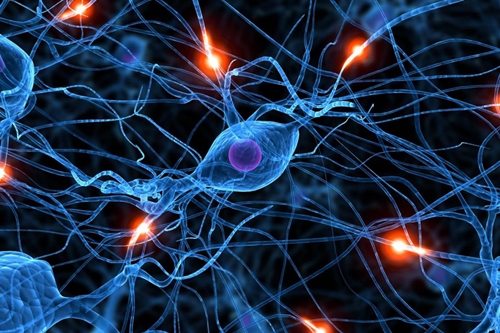28 July 2017. Stimulation of a main cranial nerve is shown in tests with lab rodents to relieve additional symptoms and complications in severe traumatic brain injuries. Results from the study by researchers at Feinstein Institute for Medical Research and the affiliated Hofstra University medical school in Manhasset, New York, appear in today’s issue of the journal Scientific Reports.
A traumatic brain injury, or TBI, occurs from a bump, blow, or jolt to the head that disrupts normal functioning of the brain. According to Centers for Disease Control and Prevention, TBI is responsible for 2.2 million annual emergency room visits and 30 percent of all injury deaths. The agency says falls account for 4 in 10 TBIs (41%) — 8 in 10 TBIs (81%) in people over age 65 — followed by unintentional blunt-force injuries (16%), motor vehicle accidents (14%), and assaults (11%).
The team led by Feinstein Institute neurosurgery professor Chunyan Li addressed problems of decreased blood flow and hypoxia, or reduced oxygen being fed to the brain that occurs with TBI. These so-called secondary injuries complicate the immediate destruction of tissue and blood vessels, which can be particularly damaging when the TBI is severe. The secondary injuries often result in further death of nerve cells in the brain due to lack of adequate blood flow, and thus additional risk to brain functions. While clinicians often focus on preventing secondary injuries in TBI patients, they have few tools to work with, according to the authors.
Li and colleagues investigated the potential of stimulating the trigeminal nerve as a treatment for TBI’s secondary injuries. The trigeminal nerve is one of the main cranial nerves, responsible for transmitting sensations from the face to the brain. It also connects connects to a number of other motor and sensory regions, including the sympathetic nervous system involved with “fight or flight” reactions.
Trigeminal nerve stimulation is a type of neuromodulation that sends mild electronic impulses through the trigeminal nerve to make modest and subtle changes in the neural connections interrupted by the severe traumatic events. Electrodes for sending the impulses can be implanted, but in January 2016, Science & Enterprise reported on NeuroSigma Inc. developing a patch device for treating symptoms associated with post-traumatic stress disorder, or PTSD, and depression.
In this study, the researchers tested trigeminal nerve stimulation as a treatment for TBI’s secondary injuries. The subjects in this case were lab rats induced with severe TBI, who received trigeminal nerve stimulation, or TNS, within an hour of the injury, from electrodes placed under the skin. The results show higher cerebral blood flow and brain oxygen tension, 51 and 19 percent respectively, in the rats receiving the treatments, compared to injured but untreated rats. The treated rats also experienced less brain swelling, fewer disruptions in the blood-brain barrier, and lower levels of protein indicators of inflammation.
Raj Narayan, a co-author of the paper and executive director of neurosurgery services at Northwell Health, Feinstein Institute’s parent institution, says in statement that, “No pharmacological agents have currently been shown to improve clinical outcomes for TBI. Therefore, there is an urgent need for developing novel therapeutic strategies to maximize recovery. The data from this research study provides strong evidence that TNS offers neuroprotection following brain damage.”
More from Science & Enterprise:
- Darpa Funding Research on Brain-Digital Implants
- Device Shown to Reduce Migraine Occurrence
- Nerve Stimulation Approved for Children’s Epilepsy
- Brain-Computer Device Tested with Consciousness Patients
- Neural Technology Research Centers Launched
* * *


 RSS - Posts
RSS - Posts
You must be logged in to post a comment.